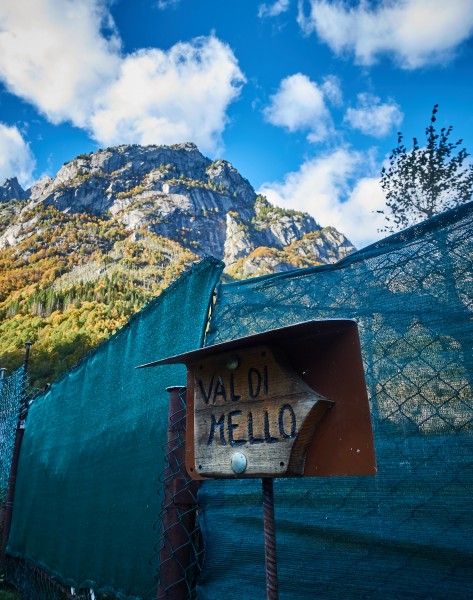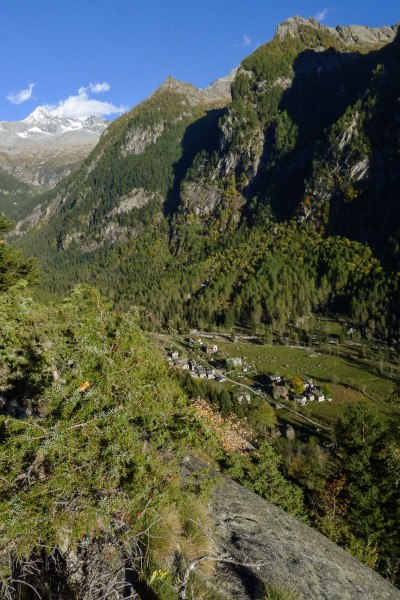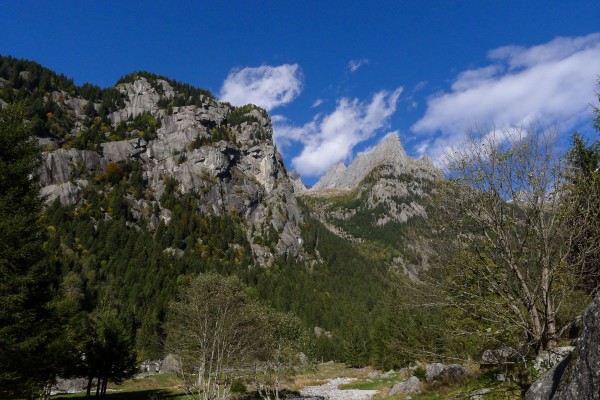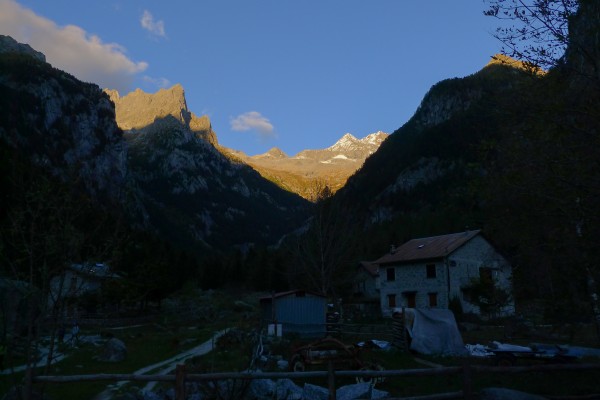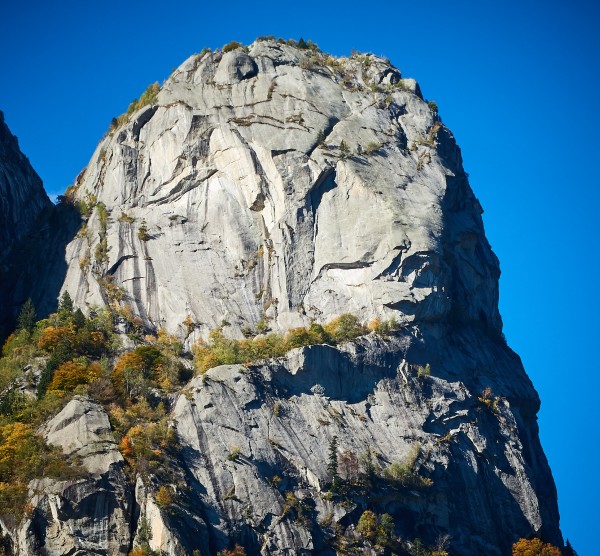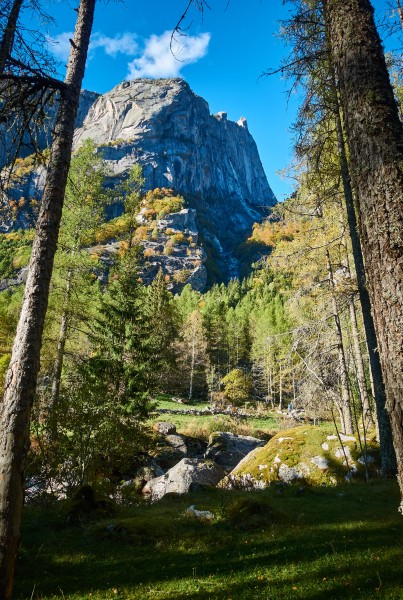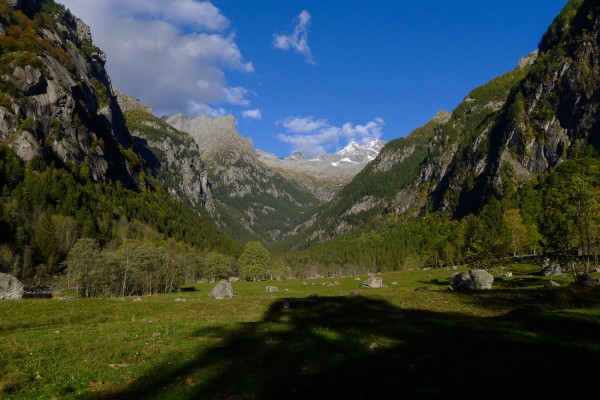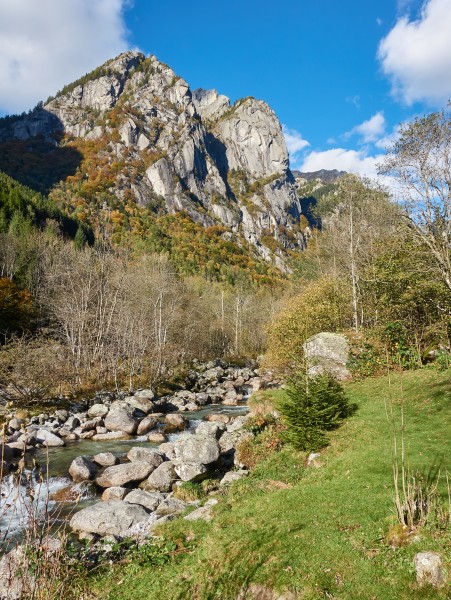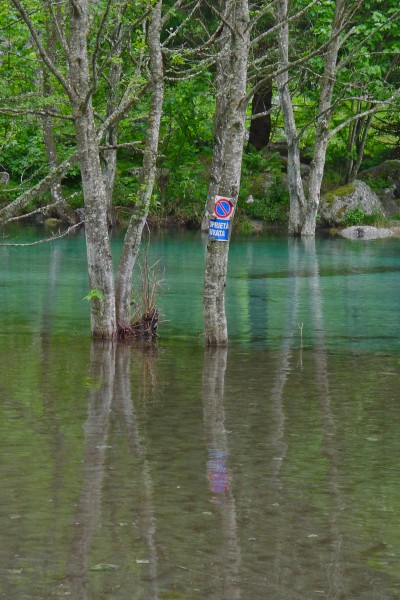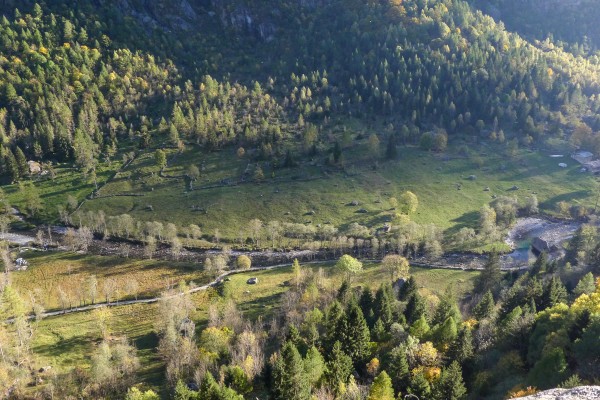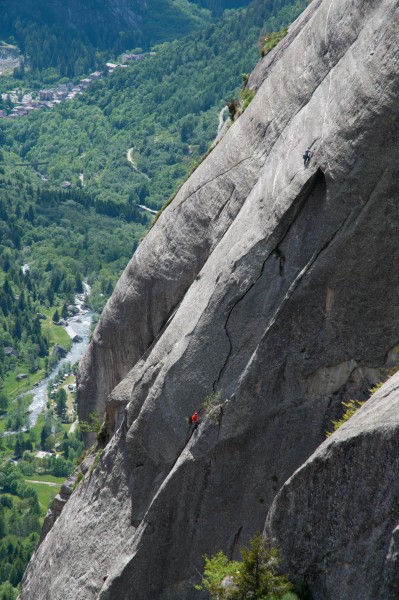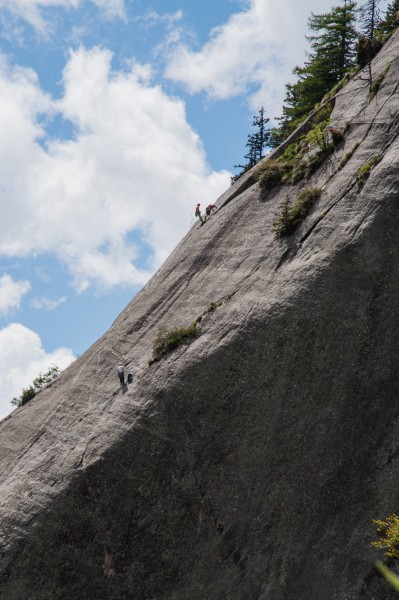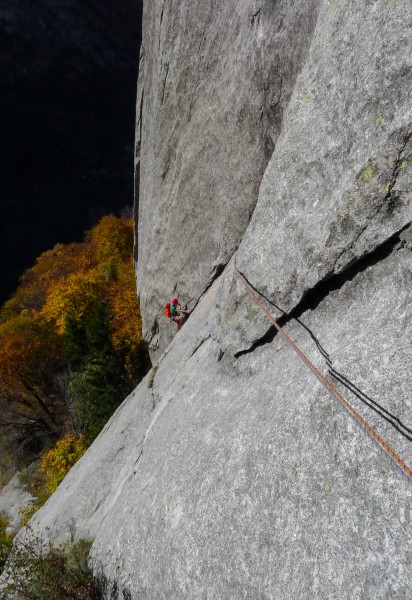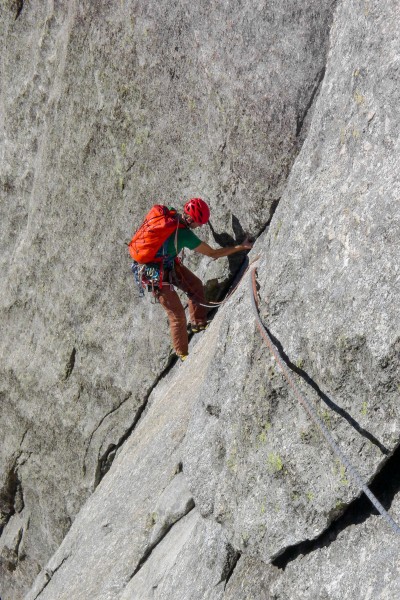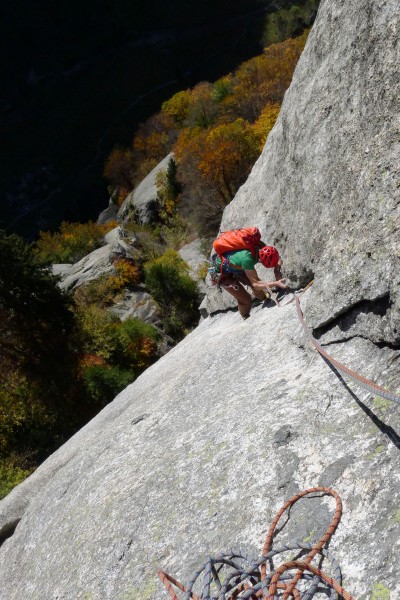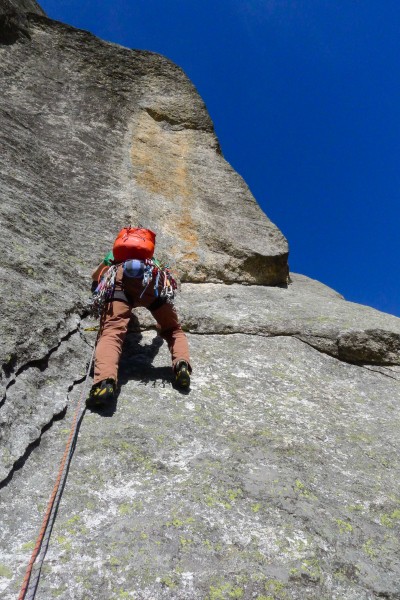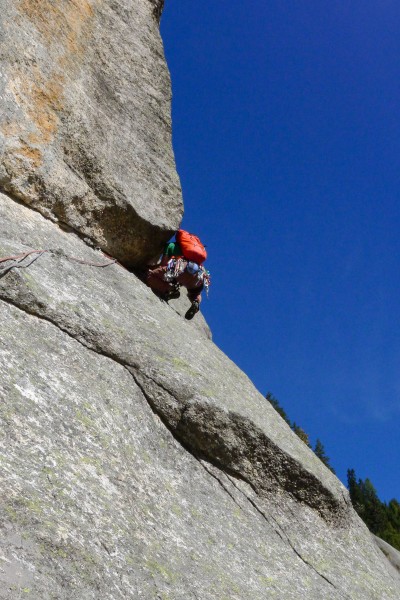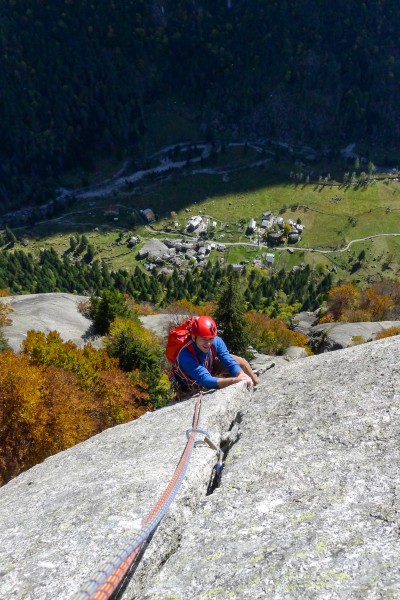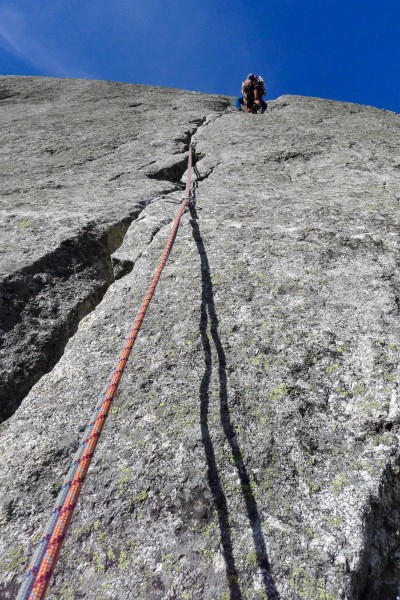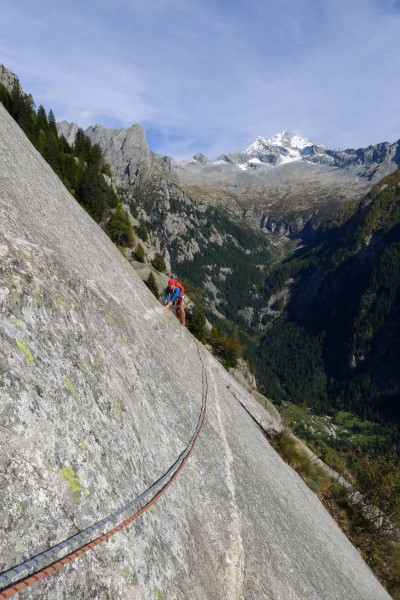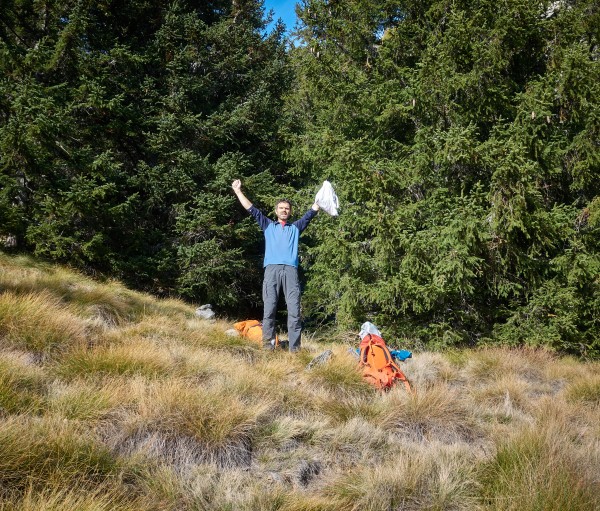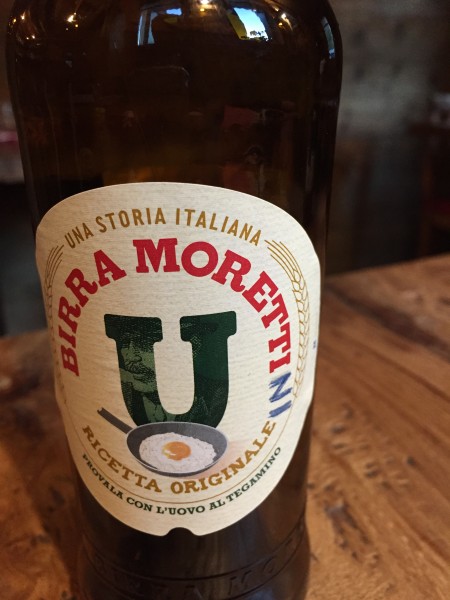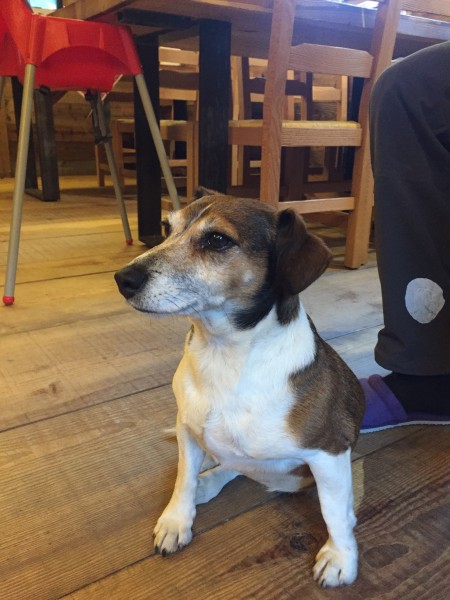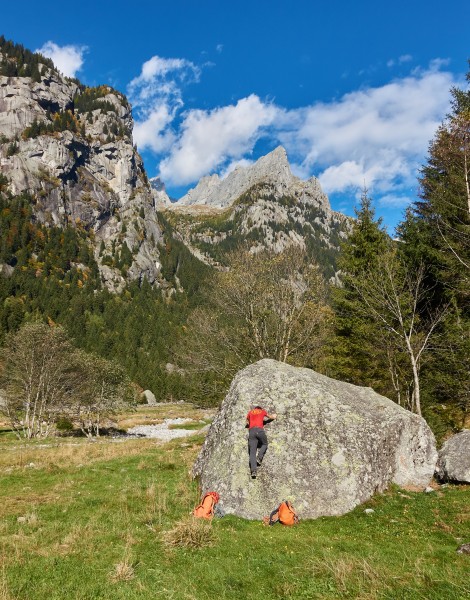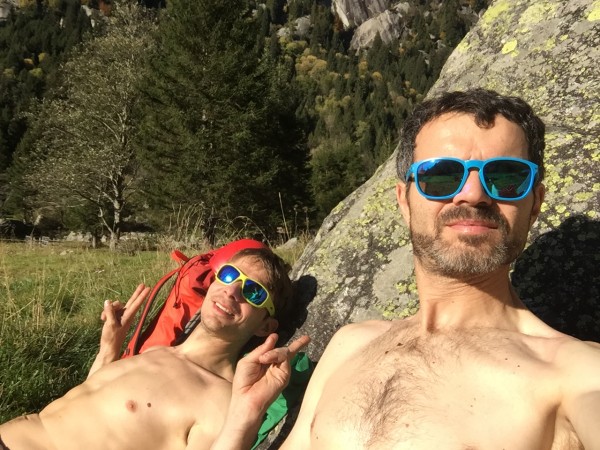Supertopian friends! After a far too long break Iím back with a trip report from across the big pond to hopefully please you and live up to the high standards of this site.
We had some brilliant autumn days last year in Europe and I was lucky enough to have time and a partner to spend some days in Val di Mello.
Val di Mello is in the north of Italy, the northern side of the valley is made of such summits as the Pizzo Cengalo, Punta Allievi, Pizzi del Ferro, Punta Rasica and a few other important alpine summits, which make the border to Switzerland and tower more than 2000m over the valley floor. The eastern end of the valley is closed by the Monte Disgrazia, a gorgeous summit, by far the highest in the area.
However, Val di Mello is best known for its rock climbing, which is done mainly on the granite slabs closer to the valley floor. And itís not just granite, it is GRANITE!!! Coarse grained granite with quartz veins giving it unbelievable friction and wonderful cracks.
In the 1970ís local climbers and climbers from the close by Milan pioneered routes up rock structures and slabs in Val di Mello and since then hundreds of climbs from single pitch to 20+ pitches have been opened.
Exploration of the valleyís faces and the style of climbing were inspired by what had been going on for years in Yosemite. Knowing that faces such as El Cap and Half Dome could be and had been climbed inspired the pioneers of Val di Mello and set the tone for what was to come. Climbing at the times was done in the spirit of the í68 movement and was not just sport, it was also a rebellion against the hierarchical and traditionally structured alpine clubs of the times. Generations of alpinists had previously ignored all faces and slabs located close to the valley floor, some of them hundreds of meters high but without a true summit by classical means. These structures offered a perfect playground to explore and shape a more playful discipline in the vast field of mountaineering and climbing. More playful certainly does not mean less challenging and the grades of difficulty and scarcity of protection reached in the early years prove the expertise of the pioneers. One could actually suspect that the amount of protection on the slabs must have been inversely proportional to the use of hallucinogenic substances at the time. How on earth would someone otherwise climb a 50m slab pitch graded 6c without a single piece of protection?
While the drugs have mostly disappeared, the protection has not appeared on the vast majority of the climbs. Pretty much all big classic climbs still have only old pitons left by the first ascenders or no protection at all. This is rather unusual for Europe, where bolting and re-bolting has at times been taken to extremes, with cracks that could perfectly well be protected with cams and nuts now being unnecessarily bolted. Not in Val di Mello, where only the more recent climbs have bolts. Nowadays climbers concentrate on a few popular routes, which can be protected and are not overly hard. The vast majority of climbs are for a rather small elite of people who climb well and have no fear.
Not only is the climbing in Val di Mello stellar, the place itself is also a piece of nature that has so far resisted the hordes of barbarians that flood it on weekends during spring, summer and autumn, luckily and miraculously so.
Remember weíre in Europe, not the High Sierra. So there are no really remote places, wilderness is limited to isolated specks of land and must be treasured and kept secret. Val di Mello is certainly not secret, and wilderness is limited. Itís more like a well-kept garden shaped by centuries of human presence with farmers and shepherds fighting hard for their lives in the 19th and up to the mid-20th century. Every single square meter of land, regardless how steep, was exploited for pasture, agriculture or to make a living out of it. Today itís mainly tourism. What used to be stables in more ancient times are now private holiday houses or hostels mainly visited by climbers, especially in spring and autumn, when temperatures are not too high and days are crystal clear.
So, last October Jakob and I rented a car and drove there. Our drive was a quest for the best music (Pink Floyd ad nauseam) and for a shop to get some good food for our coming days. We were definitively not planning to go hungry, this is Italy after all.
We had clear climbing plans: Jakob had never climbed Luna Nascente, probably the best known moderate climb of the valley and easily among the best climbs of its kind altogether; so that was a must. I had climbed it back in 1996 and was eager to have another go. Traffic is the biggest problem on Luna Nascente, itís so popular that you can hardly find it without other parties on it. We had it to ourselves back in 1996, but it was November and foggy.
And we had it to ourselves again this time, despite it being October and perfect weather. Thatís what I call luck. The approach is in a fairly steep beech forest and takes around one hour. The climb starts a few hundred meters off the valley floor with the hardest move of the entire route 3 metres off the ground. According to the guidebooks pitch 1 is a 6b, but this one single move seemed incredibly hard to me; so I aided it up. The second pitch is graded 6a+, a fairly strenuous traverse under a roof on small underclings and even smaller smears for the feet. Having done the first two pitches you enter a series of 3 spectacular pitches of non-stop laybacking and occasional jamming along a gigantic flake up the face. Move after move after move after move of beauty and fun.
The next pitch (no. 6) involves moving away from the gigantic flake to the right, follow a crack for about 8 m, traverse back to the left, downclimb along the flake for a few metres and the finally traverse onto the flake with just a few delicate moves on friction. The pleasant surprise comes when you reach far to the left and find yet another crack, which brings the heart rate down immediately. This pitch is all on wide cracks and if you donít have any wide gear you run it all out, except for an old belay at the top of the downclimb, which is very convenient for protection. From the savior hold at the end of the traverse to the next belay come 15 more metres of exposed climbing following a crack that would take a BD #4 cam, if you had it alongÖ..
One would believe that eventually all this beauty ends, but it doesnít. Pitch 7 is yet another crack, 40 m of ecstasy.
Pitch 8 and the rest of the climb come in two options: follow the crack for another 2-3 pitches to the top, from below it looks dirty and thereís quite a bit of grass and trees looking out, not appealing and hardly ever climbed. Alternatively, follow the quartz vein traversing horizontally to the left for about 30 m, one piece of protection half way along the pitch.
Pitches 9 and 10 don't quite live up to the rest of the climb, but you have to get up somehow, right? One short crack pitch and then one last pitch on slab, 50 m, no protection.
With the exception of the first two pitches, the entire route comes at around 5c with very few 6a moves thrown in. The top 3 pitches are clearly easier.
Once at the top comes what we were dreaming of during climbing: the ham, and the cheese, and the bread, and all the rest of the food.
The path down is still a bit spicy and quite exposed at times, but fairly easy to follow and in just over one hour weíre back at the Rifugio Luna Nascente and the cool beer. Then itís dinner time, polenta, deer, ham, salami, cheese, cake, wine, grappa.
And the coming day we opt against our original plan to climb another big route and make a short and pleasant one. By the time we top out the hangover is taken care of and weíre ready for more relaxing.
What a tough climbing holiday, I need to train harder for more of the same.
